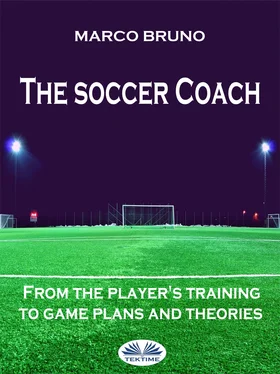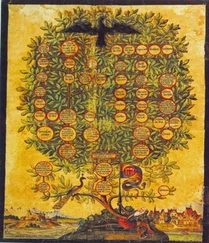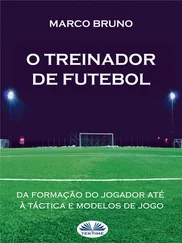Marco Bruno - The Soccer Coach
Здесь есть возможность читать онлайн «Marco Bruno - The Soccer Coach» — ознакомительный отрывок электронной книги совершенно бесплатно, а после прочтения отрывка купить полную версию. В некоторых случаях можно слушать аудио, скачать через торрент в формате fb2 и присутствует краткое содержание. ISBN: , Жанр: unrecognised, на английском языке. Описание произведения, (предисловие) а так же отзывы посетителей доступны на портале библиотеки ЛибКат.
- Название:The Soccer Coach
- Автор:
- Жанр:
- Год:неизвестен
- ISBN:978-8-87-304550-2
- Рейтинг книги:5 / 5. Голосов: 1
-
Избранное:Добавить в избранное
- Отзывы:
-
Ваша оценка:
- 100
- 1
- 2
- 3
- 4
- 5
The Soccer Coach: краткое содержание, описание и аннотация
Предлагаем к чтению аннотацию, описание, краткое содержание или предисловие (зависит от того, что написал сам автор книги «The Soccer Coach»). Если вы не нашли необходимую информацию о книге — напишите в комментариях, мы постараемся отыскать её.
The Soccer Coach — читать онлайн ознакомительный отрывок
Ниже представлен текст книги, разбитый по страницам. Система сохранения места последней прочитанной страницы, позволяет с удобством читать онлайн бесплатно книгу «The Soccer Coach», без необходимости каждый раз заново искать на чём Вы остановились. Поставьте закладку, и сможете в любой момент перейти на страницу, на которой закончили чтение.
Интервал:
Закладка:
The increase in physical capacity cannot be proposed in the same way for young people and adults, indeed there must be further differentiation even in the same youth field, according to age groups.
Lead, for example, a cycle of training for 12-13 year olds (very young) with the aim of achieving maximum performance to achieve immediate successes; it means distorting the spirit of training itself; in fact, the boy must be led gradually and in small steps and over the years towards the desired return.
A preparation too fast and early, which is usually always linked to achieving ambitious goals for adults, will give significant results in the short run, but it certainly causes damage that almost always are irreversible.
When young people and adolescents in particular are subjected to an excessive physical and psychological burden, their motivation for what they are doing decreases; their desire diminishes until they reach a real refusal in the face of the first failures. So you can understand how many times the young players after training with their team, find themselves (in the oratory, in the yard or in open spaces) to finally play soccer.
A graded and targeted workout leads to a higher degree of physical and athletic preparation in adulthood and keeps it stable longer over time.
At the end of the youth cycle the player must:
have reached a correct physical maturation;
have acquired a complete technical background;
have acquired a correct tactical sense;
have developed the so-called “qualities of will” indispensable to obtain lasting results, that is:
availability for group work;
collaboration spirit;
willingness to learn and work;
awareness of improvements through commitment;
desire to emerge.
These qualities act positively not only in sports, but they are a great help to face life and the difficulties of every day.
Alongside these primary objectives, we must consider other aspects that are of great importance for the training of young people:
- maintenance and care of health and personal hygiene;
- the organization and employment of free time;
- the game of soccer and its training must remain in second place with respect to school or work;
- training must not involve risks to the health and future growth of the young person;
- joy and serenity must always be placed in the foreground: therefore avoid tiring, monotonous and repetitive workouts (this does not mean that you cannot repeat exercises already carried out);
- young people must always be able to draw constructive and socializing experiences from training;
- along with soccer young people must be able to pursue other interests especially at a cultural level.
The coach of the youth sector must know how to recognize a potential soccer player by evaluating his skills and competences related to:
TECHNIQUE:
- global attitude to movement;
- sensitivity to ball contact and skill in its control;
- good attitude to defend the ball in certain game situations.
TACTICS
- sense of orientation;
- promptness in the ability to judge on the advance planning of offense and defending play moves.
PERSONALITY QUALITIES:
- ability to impose himself;
- resoluteness of purpose;
- constancy of will;
- good social behavior;
- modesty in knowing how to put oneself at the service of others.
PHYSICAL CHARACTERISTICS:
- physical constitution which reveals an adequate and regular development;
- potential athletic skills.
Training young people means above all being able to correctly implement all the phases of the general education strategy:
- knowledge of the student in reference to his motor development;
- knowledge of educational problems in different age groups;
- continuous evaluation of the variations induced in the personality and maturation of the young, from the environmental influence and from the physical-motor educational action.
Especially for young people up to 14/15 years, the coach must follow as closely as possible the principle of versatility.
The versatility is the main way to make the students undertake a serious, correct and valid start up to the sport; It requires:
- analytical interventions (development of auditory and visual perception, sensory-motor coordination, of fine movements);
- global interventions (multivariate sequences, mixed paths, multipurpose games, team games);
- timely interventions (the right thing at the right time).
Effects of some sports on young people
| SPORT | EFFECT |
| swimming | Increase of laxity |
| running | Limitation of mobility in some joints |
| Tennis-fencing | Asymmetrical training |
| soccer | Lower limb imbalances |
(G. Frohner, 2002)
This would lead us to think that all these activities can guarantee a complete development of the individual.
This is not true if we do not organize the activities so that they are integrated with each other without one being predominant over the other. Reason for which it is always advised, with regard to the formation of a soccer player, to implement multi-purpose activities especially in prepubescent and puberty age regardless of the sport that the individual is practicing. It is therefore important that the training proposals are inclusive of all factors (without forgetting which the main activity is)
COACH RESPONSIBILITIES
Many coaches, because they offer their time for free, think they’re not responsible for the growth and health of the guys who train, but only for the sporting result of their action. The coach of youth teams is instead considered responsible for the psychological damage that can cause to young people and especially the physical damage caused by negligence or non-knowledge: managers (co-responsible) should remember to always inform the coach of his responsibilities before start his work.
It would be important at least to know that there are phases of growth in which different characteristics and coordination skills are developed; they’re called SENSITIVE PHASES
Sensitive phases
Stages of greater sensitivity of different motor skills and psychophysical qualities in the ages of six to fifteen.
Between 5 and 9/10 years the basic motor schemes are achieved; precision in movements has increased
Between 6 and 8 years improves balance quickly
Between 7 and 10 years improves speed of movement
Between 8 and 10 years the attitude to predict the speed and direction of moving objects grows
Between 9 and 10 years the maximum step frequency is reached
Between 9 and 11 years advances in sensory-motor coordination (eye-hand and eye-foot general dynamics) are obtained
Between 11 and 12 years the development of lateralization is completed
Between 12 and 18 years the muscle force doubles; for girls after 13 it does not substantially increase
Up to 14 years avoid passive mobility exercises, practically those performed with the help of others
After 10 years training for muscle stretching and mobility begins
Phases of sports training
Before listing the various phases of sports preparation it is necessary to remember that the chronological ages indicated are purely schematic; in the juvenile preparation it is much more serious and correct to consider the biological ages of the various subjects.
| Stages or levels | All sports activities | Soccer in particular |
| 6-10 years | Preliminary general preparation | Me and the ball |
| 10-13 years | Beginning for starting-up sport | Me, the ball, the partner |
| 13-15 years | Training specialized in a sport | Me, the ball, the partners, the opponents |
| 15-18 years | Sport improvement:1. Area of the first great successes;2. Zone of optimal possibilities;3. Zone of stabilization of maximum performance. | The team |
These indications are important in order to establish what the training proposals are and to be able to plan the activities
Читать дальшеИнтервал:
Закладка:
Похожие книги на «The Soccer Coach»
Представляем Вашему вниманию похожие книги на «The Soccer Coach» списком для выбора. Мы отобрали схожую по названию и смыслу литературу в надежде предоставить читателям больше вариантов отыскать новые, интересные, ещё непрочитанные произведения.
Обсуждение, отзывы о книге «The Soccer Coach» и просто собственные мнения читателей. Оставьте ваши комментарии, напишите, что Вы думаете о произведении, его смысле или главных героях. Укажите что конкретно понравилось, а что нет, и почему Вы так считаете.












